Sea Turtles: A Dive into Their World

Sea turtles, known as “Penyu” in Indonesian, are fascinating marine creatures that have roamed the Earth’s oceans for over 100 million years. They are well-adapted to life in the ocean and play vital roles in maintaining the health of marine ecosystems. One of the roles of sea turtles, particularly green sea turtles, is to feed on seagrass beds. Their grazing helps maintain the health of the seagrass beds and encourages their growth and thickness.
Species of Sea Turtles
There are seven species of sea turtles, each with unique characteristics and behaviors:
- Green Sea Turtle (Chelonia mydas) : Known for their greenish-colored fat, these turtles are herbivores and primarily feed on seagrasses and algae.
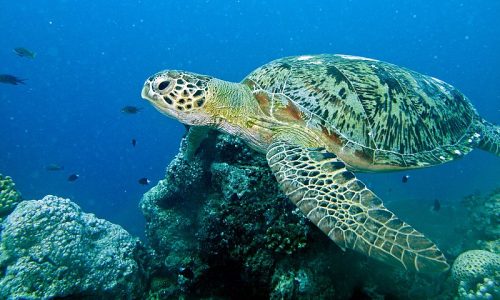
Photo Credit : Bernard DUPONT/flickr
- Loggerhead Sea Turtle (Caretta caretta) : Named for their large heads, loggerheads have powerful jaws that allow them to eat hard-shelled prey like conchs and whelks.
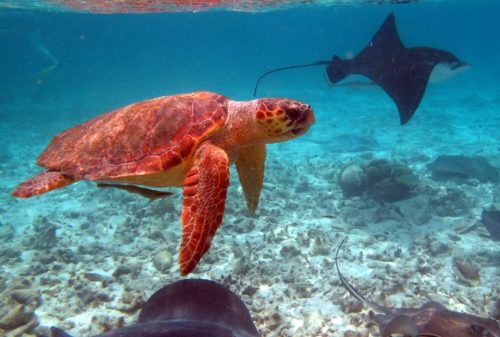
Photo Credit : Amy Davis/MYSHOT
- Hawksbill Sea Turtle (Eretmochelys imbricata) : Recognized by their pointed beak and beautiful patterned shell, hawksbills are the primary source of tortoiseshell products, making them critically endangered.
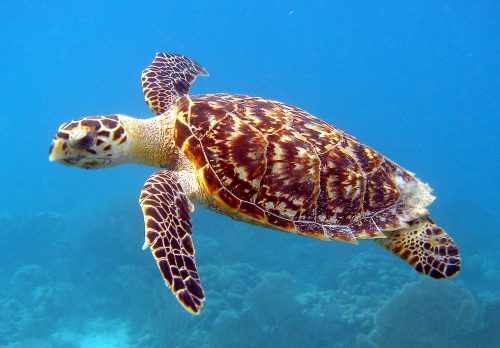
Photo Credit : Caroline S. Rogers USFWS Southeast
- Leatherback Sea Turtle (Dermochelys coriacea) : The largest of all sea turtles, leatherbacks can reach lengths of up to 7 feet and weigh as much as 2,000 pounds. Unlike other sea turtles, they have a soft, leathery shell.
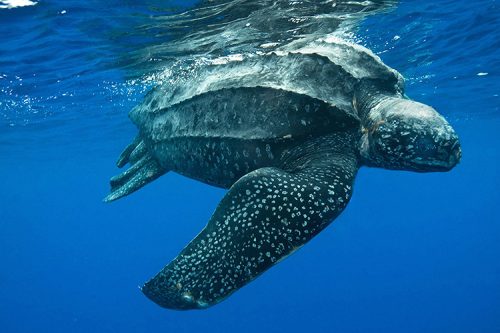
Photo Credit : NOAA Fisheries
- Kemp’s Ridley Sea Turtle (Lepidochelys kempii) : The smallest and most endangered of all sea turtles, Kemp’s Ridleys are known for their synchronized nesting in broad daylight, a phenomenon known as “arribada.” The term “arribada” is a Spanish word that means ‘arrival’. In the context of sea turtles, it refers to the unique phenomenon where female turtles of some species come ashore in large groups to lay their eggs. This event usually occurs over a period of several days and can involve hundreds to thousands of turtles. The Kemp’s Ridley Sea turtle is known for this behavior, and uniquely, they do this during the daytime. Most other sea turtles lay their eggs at night. This synchronized nesting behavior is thought to have evolved as a survival strategy, overwhelming predators with sheer numbers and thereby ensuring the survival of the next generation.

Photo Credit : Kate Sampson/NOAA Fisheries
- Olive Ridley Sea Turtle (Lepidochelys olivacea) : Similar to Kemp’s Ridleys, Olive Ridleys also participate in mass nestings and are named for the olive color of their heart-shaped shell.
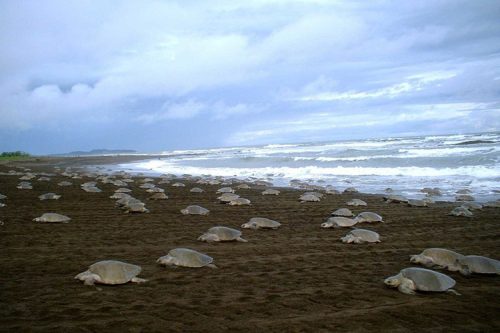
Photo Credit : Michael P. Jensen/NOAA Fisheries
- Flatback Sea Turtle (Natator depressus) : Found only in the waters around Australia and Papua New Guinea, flatbacks have a flattened shell and are known to nest on beaches.

Photo Credit : Calen Offield
Life Cycle and Migration
Sea turtles have a complex life cycle that begins when females lay their eggs on sandy beaches. After incubating for about two months, hatchlings emerge from the nests and scramble to the ocean. They spend their early years in open ocean habitats and then move to nearshore feeding grounds as they mature. Adult sea turtles are known to migrate long distances between their feeding grounds and nesting beaches.
Threats and Conservation
Sea turtles face numerous threats, including habitat loss, climate change, pollution, and accidental capture in fishing gear. Illegal wildlife trade, especially for their meat, shells, and eggs, also poses a significant threat.
Conservation efforts for sea turtles are multifaceted and include protecting nesting beaches, reducing bycatch, rehabilitating injured turtles, and raising public awareness about these incredible creatures and the challenges they face.
In conclusion, sea turtles are remarkable creatures with a rich history and an uncertain future. Their survival depends on our actions and commitment to preserving the oceans and their inhabitants. Let’s dive in and do our part to protect these majestic creatures of the sea.

